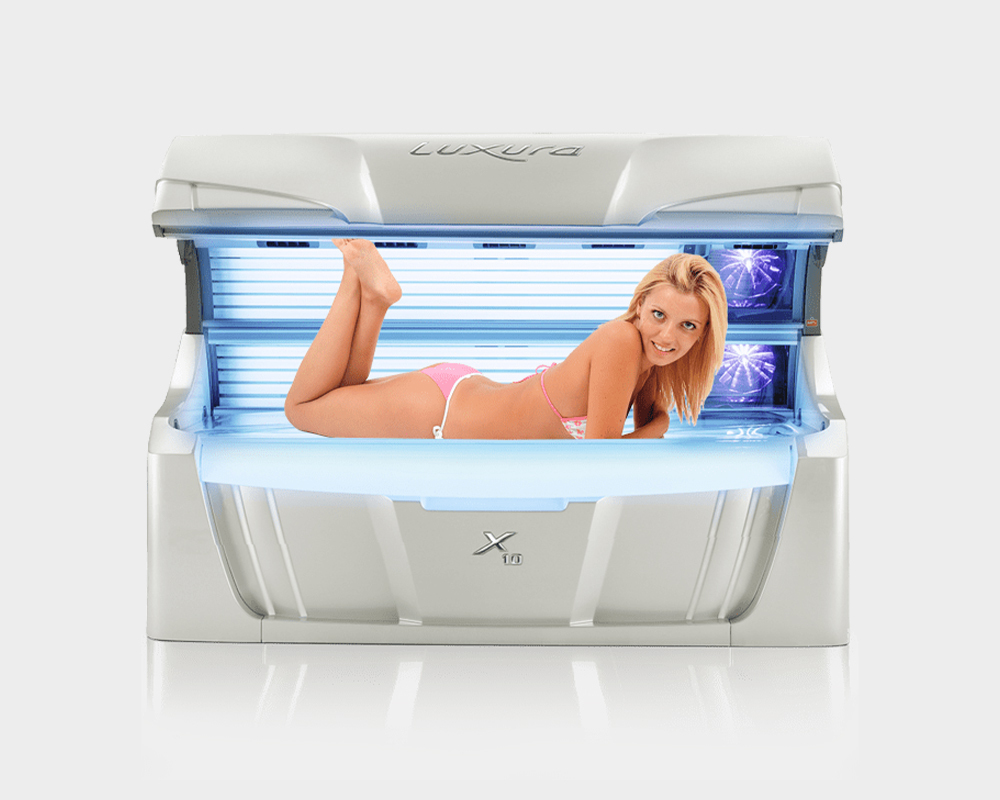UV bed Tanning Bed
Advice for a Beautiful & Natural TYan
UV SESSIONS
UNLIMITED WEEK
UNLIMITED MONTH
MEMBERSHIP PLANS
UV bed Tanning Bed



Exfoliation, really useful to clean the skin from early unhealthy pigmentation and malicious irregularities, should not be used in the weeks preceding a long sun exposition, the skin should instead be hydrated and protected. The epidermis is indeed the only protection to the deep layers of the skin, the thicker it is, the less dermal structures will be affected by sunlight. The protection of the skin prior to the sun exposure is fundamental to fragile skin and this will also insure that there is no permanent damage to the skin.
Approximately 2 to 4 weeks after the last tanning session. After the natural renewal of the skin, the cells are gradually pushed higher. After about 28 days, the skin is renewed. The tanning of the skin can last longer if you apply a specific tanning lotion.
This should be avoided in order not to exceed the daily dose of UV rays and not get a sunburn.
The internal surface of the arms and legs does not tan as easily because it contains less pigment cells than the rest of the skin. The face does not tan as well either because it has a thicker cornea layer to protect it from UV rays. Freckles and moles contain more tanning pigments and therefore get darker faster than the rest of the body. Parts of skin that are compressed are less hydrated. The lack of oxygen can lead to a reduction in the intensity of the melanin pigments.
The rumor which claims that taking shower after a tanning session removes the tan is false. A tan is a synthesis that takes place in the skin and not on the skin. Take care of your skin by taking a shower and by applying a moisturizer, your tan will get really highlighted.
Even if a prior exposure to artificial UV does not protect you properly from the sun, doing so stimulate your melanin system and will help you tan faster on your holiday, and you will look better on the beach! But be careful you must always wear adequate protection during your exposures to the sun.
It is entirely possible. A tan is not only due to direct exposure to sunlight, but can also be due to secondary radiations bouncing into the environment. The sand for example, strongly reflect the sun’s rays. You can therefore tan under an umbrella on the beach.
Although ultraviolet radiation is similar in both situations, one can never accurately predict the intensity of a tan taken outside because of changing factors: time of day, season, altitude, cloudiness , pollution, wind, depreciation of the ozone layer, proximity of the equator, and so on. In a tanning salon, the results are controlled, therefore predictable.
Thanks to a more sophisticated technology allowing a good mix of UVA and UVB, sunbeds simulate the solar radiation while minimizing the risk of erythema and sunstroke commonly known as “sunburn”. The tanning beds made available to our customers are mostly producing UVA. We are reproducing the sun safely.
Prevent sunburn and reduce the maximum doses received by the skin to a minimum are the two rules for all of those exposing their skin to sunlight for look, sport or work. To prevent sunburn, whether you already tanned or not, it is important that the skin gets used to new solar radiation, different from those that originally tanned the skin.
You have to wear clothes, use umbrellas and sunscreens. Be careful of any exposure, you must remove any photo-sensitizers cosmetic products (perfume, deodorant, etc.).. Under medical treatment, please ask your pharmacist, certain medications are photo-sensitizing and can cause substantial damage under UV light.
Not at all! Although skin color change less quickly when you wear a sunscreen, the final result will most likely look even better and be more durable, sunscreen will prevent your skin to burn. Additionally, a gradual tan is less dangerous, more consistent and durable.
